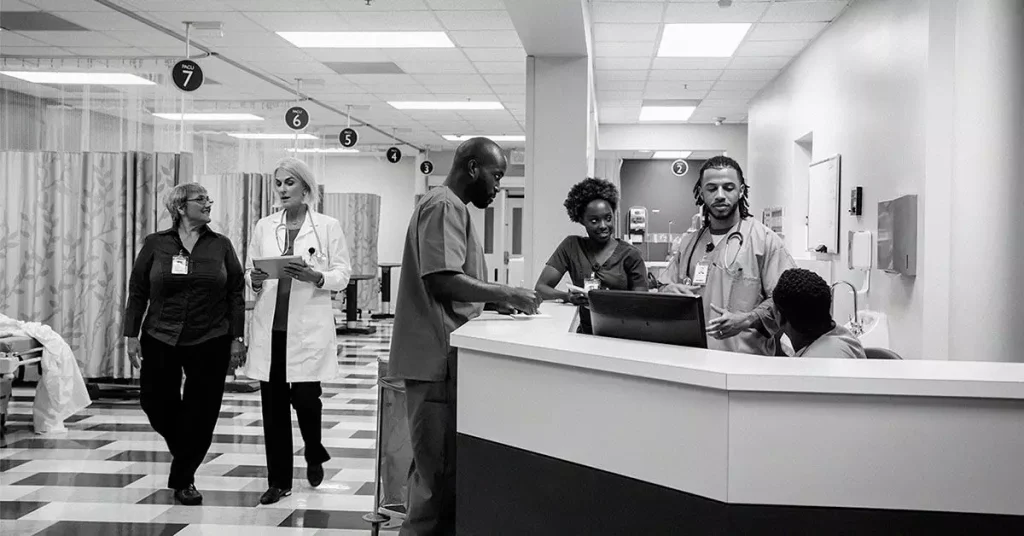Bone marrow transplants are often mistakenly viewed as a last-resort option in cancer treatment, yet they play a vital role in combating severe cancers, particularly lymphomas. This transformative procedure not only helps restore health but also allows healthcare professionals to administer aggressive chemotherapy treatments aimed at eradicating cancerous cells. While high-dose chemotherapy and radiation can effectively target malignant growths, they also severely damage the bone marrow. Fortunately, the transplantation of blood stem cells acts as a crucial lifeline, revitalizing the hematopoietic system and enabling patients to reclaim their lives after battling cancer.

Understanding Bone Marrow Transplants
Bone marrow transplants can occur at various stages of a patient’s treatment journey, whether during active therapy or in response to relapses. Understanding the different types of transplants is essential for patients and their families.
Autologous Transplants
Autologous transplants involve using a patient’s own stem cells. This approach minimizes the risk of rejection and is particularly beneficial for relatively healthy individuals facing aggressive lymphomas. The stem cells are harvested weeks before treatment, stored, and then reintroduced into the body after chemotherapy. This method is tailored to the individual, making it a preferred option in many cases.
Allogeneic Transplants
In contrast, allogeneic transplants utilize stem cells from a matched donor. This type of transplant can open new avenues for treatment but also presents more complex challenges, such as ensuring compatibility through human leukocyte antigen (HLA) matching. Finding a suitable donor can be a daunting task, often requiring extensive searching through familial and donor registries. The process can be time-consuming, and the emotional toll on patients and their families can be significant.
Peripheral Blood Stem Cell Transplants
Another method gaining traction is the peripheral blood stem cell transplant, which involves collecting stem cells directly from the bloodstream. This less invasive technique offers unique advantages, such as a faster recovery time and reduced hospital stay, making it increasingly popular among medical professionals.
Success Rates and Potential Challenges
The success rates associated with bone marrow transplants are promising yet nuanced. For instance, studies show that autologous transplants for Hodgkin’s lymphoma can achieve a remarkable 50% success rate for complete responses. This level of efficacy positions bone marrow transplants not merely as treatments but as potential cures for certain aggressive lymphomas, allowing patients to live symptom-free.
However, the journey is fraught with challenges. One significant complication is graft-versus-host disease (GVHD), particularly in allogeneic transplants. In GVHD, the transplanted donor cells may attack the recipient’s healthy cells, leading to an immune response that can range from mild discomfort to severe health risks. Patients must remain vigilant and communicate any adverse symptoms to their healthcare providers promptly.
Additionally, there is a risk of reintroducing rogue cancer cells during autologous transplants. While advancements in stem cell collection techniques aim to reduce contamination, this risk is still a concern that requires careful management. The medical community is continuously working on refining these techniques to ensure the highest level of safety for patients undergoing these procedures.
Evaluating Candidates for Bone Marrow Transplants
Determining a patient’s eligibility for a bone marrow transplant involves a thorough assessment of various factors, including age, overall health, medical history, and the specific type of lymphoma. For those deemed suitable candidates, the commitment to undergo this demanding procedure often reveals an extraordinary resilience and determination.
A recent study highlighted that over 60% of Hodgkin’s lymphoma patients and approximately half of non-Hodgkin’s lymphoma patients survive for at least a decade following autologous transplants. This statistic underscores the potential of bone marrow transplants to significantly improve survival rates and quality of life for patients. As survival rates continue to improve, patients who thrive for two to five years post-transplant show promise of achieving long-term health and well-being.
The Future of Bone Marrow Transplants
Advancements in transplantation techniques and supportive care protocols are transforming bone marrow transplants into viable options for many individuals battling aggressive lymphomas. The intertwined fate of survival hinges not only on the effectiveness of the transplant but also on the strength and support of the patients and their families.
Innovations in Care
Recent innovations in care, such as improved pre-transplant conditioning regimens and post-transplant monitoring, have contributed to better outcomes for patients. Healthcare teams are now more equipped than ever to manage complications and provide comprehensive support throughout the transplant process. This holistic approach ensures that patients receive not only medical treatment but also emotional and psychological support, which is crucial during such a challenging time.
Patient Empowerment and Education
As education and technological advancements progress, the once-daunting prospect of a bone marrow transplant is evolving into a beacon of hope. This procedure represents a strategic move towards reclaiming life and restoring health after enduring the challenges of cancer treatment. For those courageous enough to embark on this life-altering journey, the future appears increasingly bright.

In conclusion, bone marrow transplants are a pivotal component in the fight against severe cancers, particularly lymphomas. By understanding the types of transplants available, recognizing the associated risks, and evaluating candidate eligibility, patients can make informed decisions about their treatment options. The journey may be challenging, but with ongoing research and advancements in medical care, bone marrow transplants continue to offer hope and the possibility of a cancer-free future.
With the right support and determination, patients can navigate the complexities of their treatment and emerge stronger, ready to embrace a new chapter in their lives.

